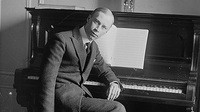Impressionism & Contemporary Pianists
Previously, we talked about the Baroque, Classical, and Romantic periods. Today, we will talk about the Impressionism and Contemporary periods. The Impressionism period(1870-1920) is thought to have been a transition between the Romantic and Contemporary periods. The Impressionism period was short, and it hasn’t been regarded fully as a period. Impressionism was more about suggestion and atmosphere, which meant in piano pieces, that there would be more “color” added in the piece by adding more harmony, texture, or by having new chords or tones. The two pianists that were a big part of this movement were Claude Debussy and Maurice Ravel.
With the Contemporary period (1920-current), they have more atonality (one tone, even if playing with two or three different ‘voices’). Contemporary period has been known more about composers forming their own ideas and expressions and having experimental music be the main component of the era. Popular pianists in the time are listed below.
Sergei Prokofiev
(Source: Wikipedia)
Sergei Prokofiev, born in the Russian Empire in 1891. He listened to his mother play the piano and immediately fell in love with it. He was taught when he was younger by a teacher and started experimenting with dissonant, jarring harmonies and sounds. He began composing, writing piano concertos when he was young. He then turned to writing ballets, his first being Ala and Lolli. He wrote piano sonatas, concertos, writing Romeo and Juliet Op. 64, War and Peace opera, and ended with symphonies. He survived both world wars but the restrictions during the time impeded his composing during the time. He would die in 1953 in the USSR.
Sergei Rachmaninov
(Source: Wikipedia)
Another Sergei, born in Russia, whose life was filled with depression. His mother gave him casual piano lessons at 4, and his grandfather quickly followed by getting him a teacher. He then went to study at the Saint Petersburg Conservatory. At this point, his sister had died, a few years later, his other sister would pass away, along with his father leaving the family. He fell in love with his first cousin and would marry her, but that was met with so much opposition. He wrote his Piano Concerto No. 1 soon though. His First Symphony was written in 1897 but had a lot of backlash come with it, and fell into deep depression. After meeting with Lev Tolstoy and playing for him, Rachmaninoff was told about how Tolstoy disliked the music he had played for him. He began getting therapy and then in 1901 wrote one of his best works, Piano Concerto No. 2 in C minor, Op. 18. He went touring and had a concert career between 1918 and 1943, which is when he died, so composing took a back seat during the last 25 years of his life. He would pass away in 1943, most likely of melanoma, leaving us with many piano solo pieces and works for the orchestra as well.
Maybe you will be the next Contemporary pianist! Don’t delay, get Cocoweb’s piano lamps today and start on your way to be the next great musician! You can also check out our grand piano lampsor our LED piano lamps if you have other preferences.
Thank you for following throughout the last few weeks in our piano eras in music history. Now, as you play a piece from a certain time period, you can tell the different tones and the different styles that were included in each era.
Recent Posts
-
How to Choose the Perfect Painting for Your Home or Office
When it comes to decorating your space, choosing the perfect painting can be a game-changer. A well- …7th Feb 2025 -
How Post Lights Improve Home Security and Safety
How Post Lights Improve Home Security and SafetyWhen it comes to securing your home and enhancing sa …9th Jan 2025 -
The Best LED Gooseneck Barn Lights for Different Architectural Styles
When it comes to outdoor lighting, barn gooseneck lights are a timeless classic. Their vintage cha …12th Dec 2024




